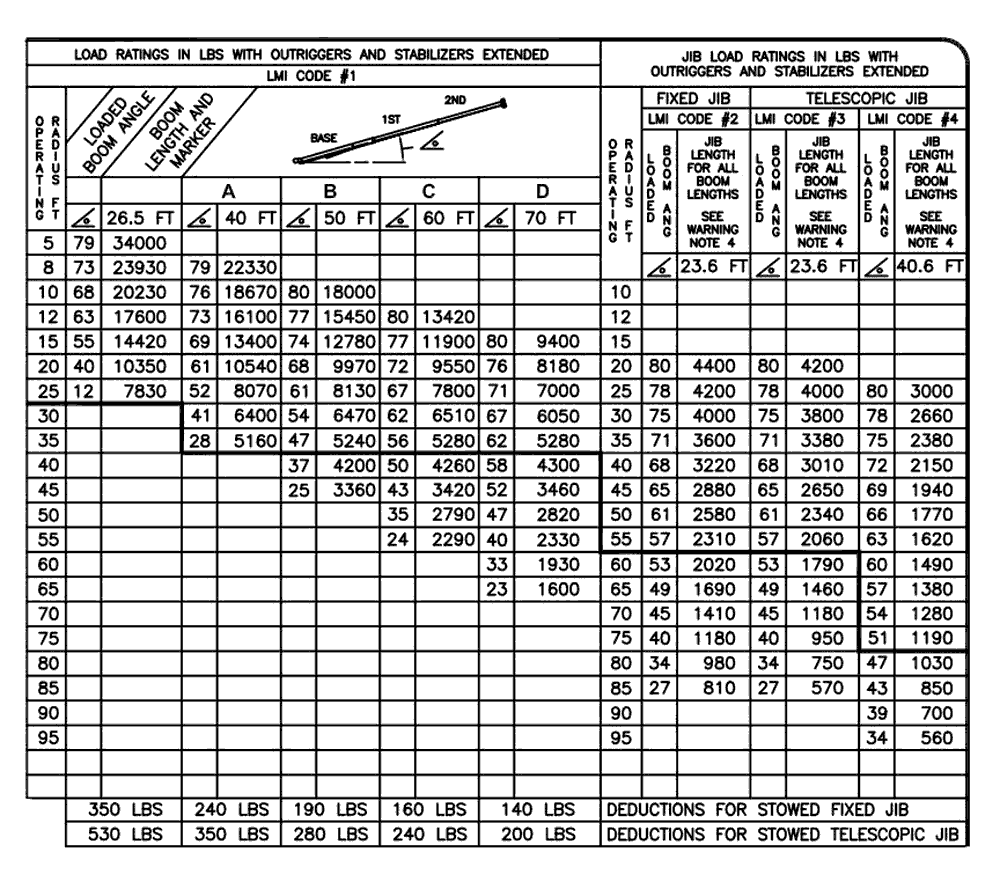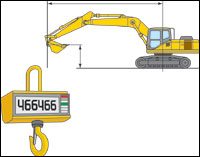
True, rated capacities for hydraulic excavators do not exceed 87 percent of hydraulic lift capacity, which is defined by the Society of Automotive Engineers (SAE) test procedure J/ISO 10567 as the smaller of boom or arm hydraulic lift capacity at specific lift positions. The hydraulic excavator's load chart provides lift capacities for a range of lift-height/lift-radius coordinates, for both over-end and over-side lifting. To perform this simple, pre-lift analysis, you need to know the weight of the load, and you need to be looking at the machine's load chart, which should be mounted in the cab and legible from the control position.

It makes sense, then, when performing excavator lifting operations with either of these machines, to first think through the lift and determine where the machine is least capable, and if capacity at that point is sufficient to handle the load safely. Always use the backhoe lifting load chartĪs our hypothetical lift demonstrates, lift capacity of an excavator-or backhoe-changes radically as the load position varies. From start to finish, then, lift capacity has diminished by nearly 60 percent during this simple operation. Then, as you touch the pipe to the trench floor, with the bucket's lifting eye now at 5 feet below grade, capacity is 14,500 pounds.

Now, as you arm out and boom down to center the pipe over the trench, you increase the lift radius to 20 feet and capacity plummets to 15,670 pounds. As you swing 90 degrees, placing the pipe over the side of the tracks, capacity drops to 23,790 pounds. At this starting point, the machine has 34,210 pounds of lift capacity, so the 3,600-pound pipe on the hook isn't much of a challenge.īut, as you ease the load 5 feet off the ground, thus raising the bucket's lift point to 10 feet, capacity diminishes to 29,630 pounds.

The lift radius (the distance between the center of the machine's swing bearing and the center of the load hook) is 15 feet, and the lifting eye on the back of the bucket is 5 feet above the ground when the rigging is pulled tight. This means you'll initially be picking an 8-foot length of 30-inch-diameter concrete pipe over the idler end of the machine. The site requires your machine to sit with its tracks parallel to the trench, but it's set back from the edge as far as practical for safety. If you would, step into the cab of our imaginary 65,000-pound crawler excavator and make a hypothetical lift.


 0 kommentar(er)
0 kommentar(er)
